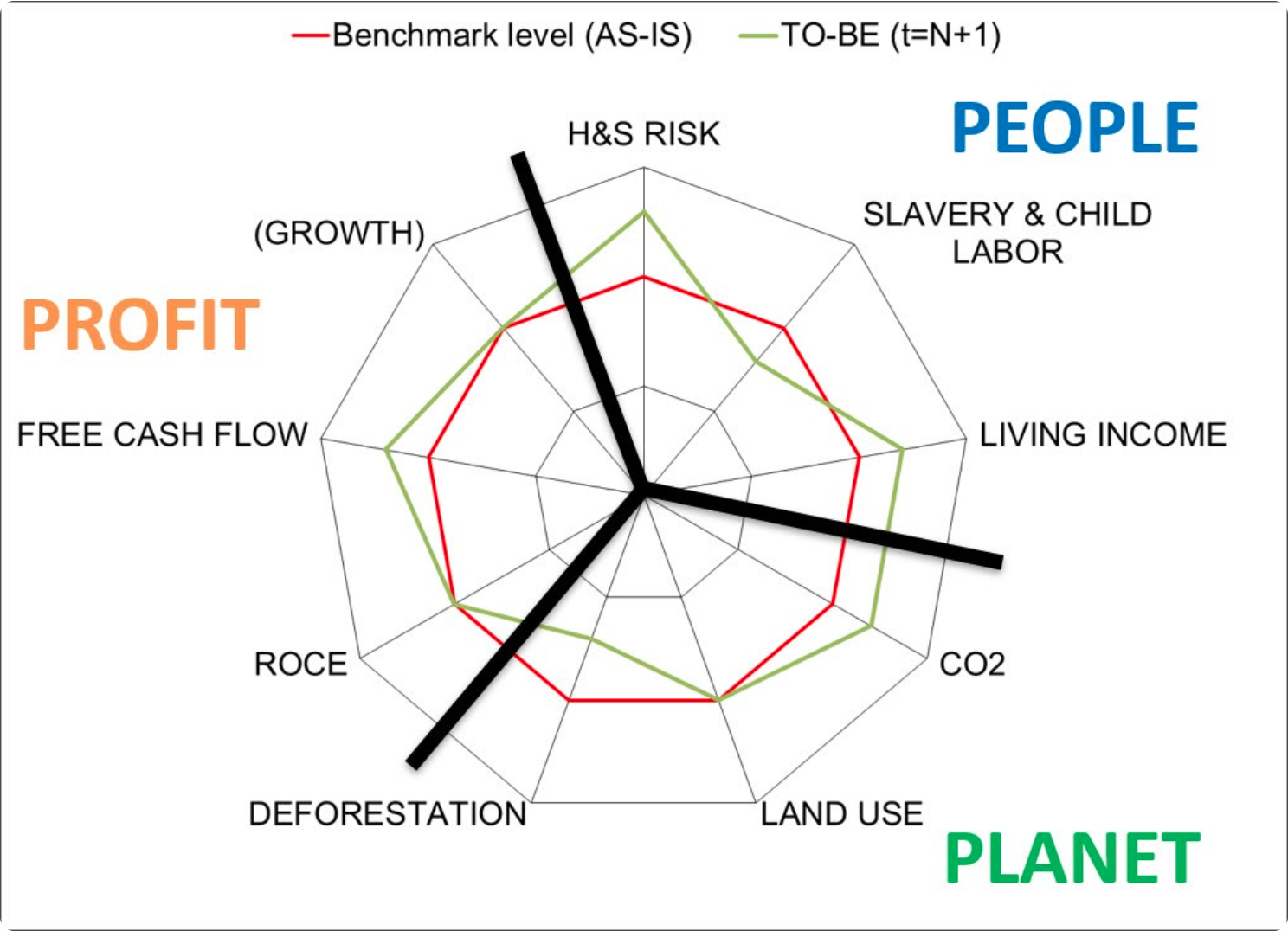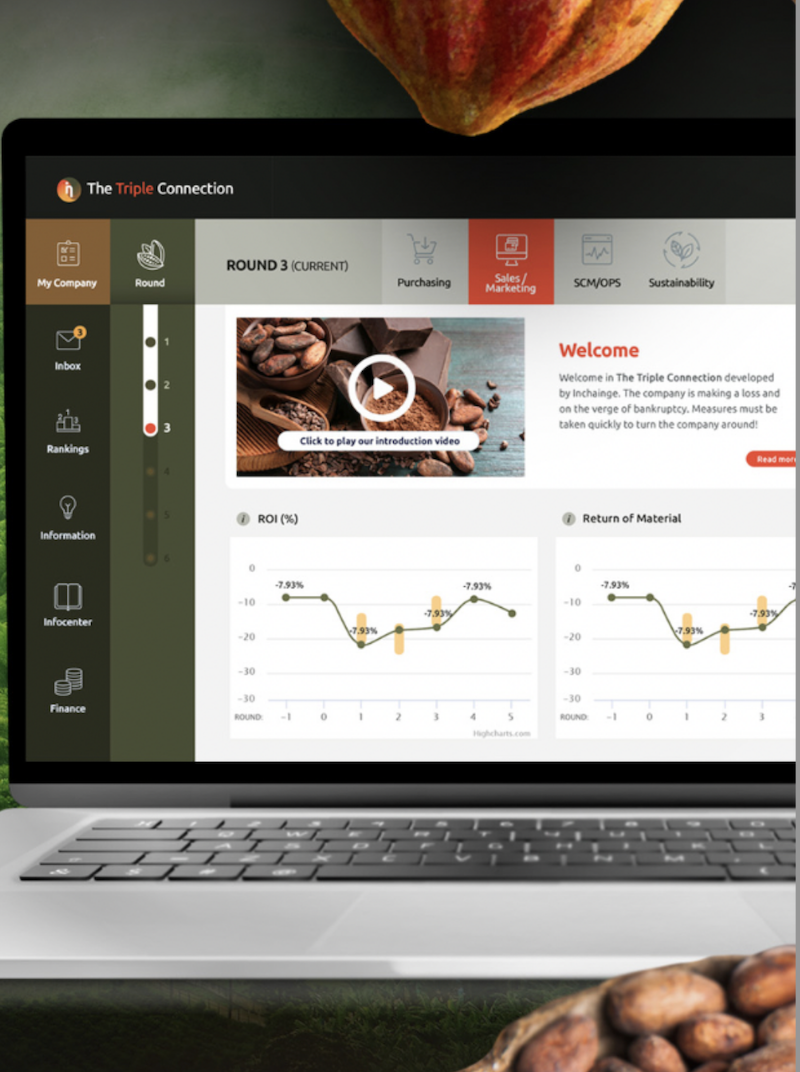Is it possible to measure the Triple Bottom Line?
The Triple Bottom Line provides a compact, general idea about what companies should consider when they are measuring value. It enables companies and businesses to look beyond the profit-line and evaluate their performance from a broader perspective – which considers the social and the environmental angles. But how do you measure the Triple Bottom Line? Is there a single unit to do so or is it more specific to projects and industries?
The biggest challenge of measuring the Triple Bottom Line
One of the most evident challenges to measure sustainability is that we cannot put a unit to social or environmental impacts. The Triple Bottom Line analysis is mainly focused on the supply chain and it compels companies to re-look at how their activities across the supply chain affects people, planet, and profit. However, these 3Ps do not have a common unit of measure. While profit is monetary and can be measured by gain or loss, planet and people are more abstract.
Despite several suggestions made by academics and professionals to monetize planet and people, many would not agree to it on either philosophical or ethical grounds. For example, how do you put a price on endangered animals or on human rights?
Supply Chain Mapping as a suggested method of measurement
It is important to note that since the Triple Bottom Line is mainly concentrated on the supply chain, more than 80% of its impact lies on the Tier 1 supply chain. Hence, it can be suggested that mapping the supply chain, tracing the activities across the supply chain, and collecting data is a way forward to measuring the 3Ps.
Companies can try to squeeze out more information from their Tier 1 suppliers to understand how they are extracting their resources. Keeping track of that might help companies to be more aware of the kind of materials or resources that they are using. Companies can ask more questions, dig deeper into their findings, and approach suppliers with any general concerns. This process can lead to supply chain mapping.
However, while collecting this kind of information or data it is important to consider that the data can be subjective in nature. For example, when the company is gathering information about land, ‘an acre of land’ can be a standalone measurement. But when gathering data about employee welfare then ‘overtime’ can be a metric to understand how much time employees are spending beyond working hours and if that affects their performance.
Although this can give a dispersed idea of the company’s performance, it also opens up the space to create flexible frameworks to measure the Triple Bottom Line.
Flexible frameworks for different entities
Measuring the Triple Bottom Line can be flexible in nature, and it can depend on various projects or policies, different geographical locations, as well as several bodies of work such as non-profit or business. The Triple Bottom Line can also be case-specific which allows a broader scope and drives multiple decisions about what kind of metrics can be included.
These metrics would be determined by stakeholders, company directors, experts in their fields, and the company’s own capacity to collect and analyze big data. This wide range of data availability is what will drive to select and calculate the Triple Bottom Line.
Variables of measurement
It can be agreed upon that the Triple Bottom Line is variable in nature, and each of the 3Ps will have their own unique components of measurement. Some of them are suggested below:
People |
Planet |
Profit |
|
|
|
Multi-dimensional bodies and their role in developing TBL
As we saw before, the Triple Bottom Line can be measured according to various entities, case-specific projects, and different locations. The multiple bodies of society such as governments, businesses, and non-profits also add another dimension to these layers.
Businesses will focus on the long-term benefits of the Triple Bottom Line, due to which they will pay heed to a scorecard that includes taxes, average working hours, welfare schemes for employees, and recycling of materials to increase value. On the other hand, businesses also align with non-profits who recognize the benefits of the Triple Bottom Line in a broader sense. For example, non-profits will look at food and agriculture while raising awareness about organic products and animal cruelty. It will also contribute to holistic and educational art practices that are culturally and environmentally relevant.
Governments are compelling companies to adapt the Triple Bottom Line by using it as a framework for decision-making and performance-monitoring. Policy-makers utilize this framework to prioritize practices which are beneficial for both the society and the environment. These policies then act like guidelines for businesses to reach their sustainability goals. Hence, through this multi-dimensional approach, the Triple Bottom Line gradually seeps into every functioning body of society.
The Radar/Spiderweb Diagram

Source: Ed Weenk
In one of his essays, ‘Juggling the 3Ps’, Ed Weenk points out that each of the 3Ps has a relevant aspect. These aspects can be focused upon according to the specific needs of a business or a company. Through this diagram, he suggests that once the aspects are defined a zero-line should be added in the middle of the web (as we see in the diagram below). This line expresses the benchmark AS-IS situation which overlooks all kinds of consequences.
He states, “One could envision, for example a scale ranging from -5 to +5 for each aspect, with zero being the AS-IS value. The total surface comparison of the spiderweb area of AS-IS vs TO-BE would then express improvement/deterioration in terms of the overall 3P.” One of the advantages of this approach is that each aspect gets its own unit.
Want to know more?
Our latest business simulation game, The Triple Connection, engages its participants in implementing a sustainable strategy for a virtual chocolate milk manufacturer. The Triple Connection finds its roots in the cacao industry and follows the path to create maximum value in its sustainable value chain. This kind of value creation requires multiple high-level roles to align on the concept of the 3Ps: People, Planet, and Prosperity.
 Now you know
Now you know
Now you know that while it is possible to measure the Triple Bottom Line, there are multiple dimensions that come into play. The Triple Bottom Line cannot to be limited to a single metric or standard of measurement, instead it has to be viewed from the lens of 3Ps. Since the Triple Bottom Line is more focused on supply chain management, it is important to create a map and keep track of what kind of resources and materials are entering the supply chain. The Triple Bottom Line can then be case-specific and companies can create flexible frameworks according to their needs.
Sources
https://www.parking-mobility.org/2016/01/19/tpp-2013-11-understanding-the-triple-bottom-line-and-applying-it-to-your-program/
https://www.ibrc.indiana.edu/ibr/2011/spring/article2.html#ftn13
https://www.emerald.com/insight/content/doi/10.1108/REGE-04-2018-0065/full/html
https://www.linkedin.com/pulse/juggling-3ps-dealing-sustainability-supply-chain-ed-weenk-msc-pdeng/
You might want to learn more about

Supply Chain Management
Successful supply chain management is indispensable for a successful business! Inchainge recognizes the importance of well-aligned and properly functioning value chains – understanding what supply chain management is and why it is so important is the first step towards a cross-functional mindset.

The Triple Connection
The innovative web-based business simulation game, The Triple Connection, engages its participants in implementing a sustainable strategy for a virtual chocolate milk manufacturer. Participants will be confronted with various real-life, real-time dilemmas. They will be compelled to make decisions that are critical to maintaining a fair balance between profitability and sustainability.
Dive into our
knowledge base
Alignment
Blended learning
Experiential learning
Learning
Supply chain
Sustainability
- Sustainability
- Carbon footprint
- Circular Economy
- Does Green Governance drive the ride to a sustainable future?
- Everything You Need To Know About Eco-Efficiency
- Greenwashing: Everything you need to know
- Is it possible to measure the Triple Bottom Line?
- Sustainability v/s Circularity
- The 3Ps Series: People
- The 3Ps Series: Planet
- The 3Ps Series: Prosperity
- The Butterfly Diagram
- The Value Hill
- What are the 3Ps of Sustainability?
- What do we know about the Triple Bottom Line?
